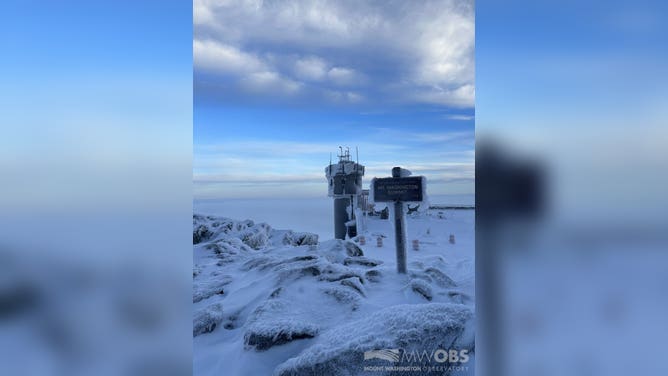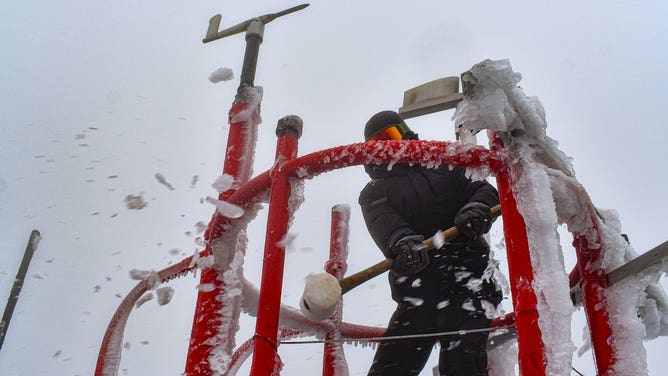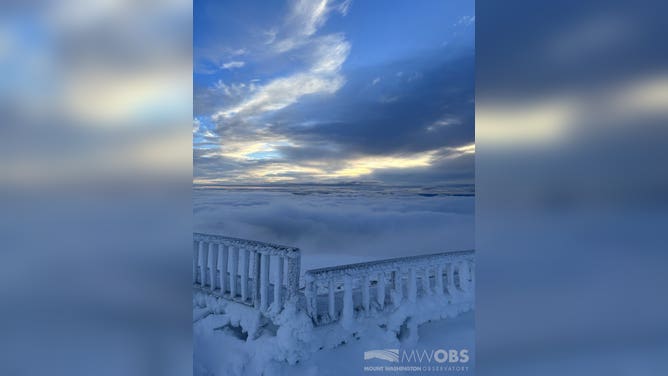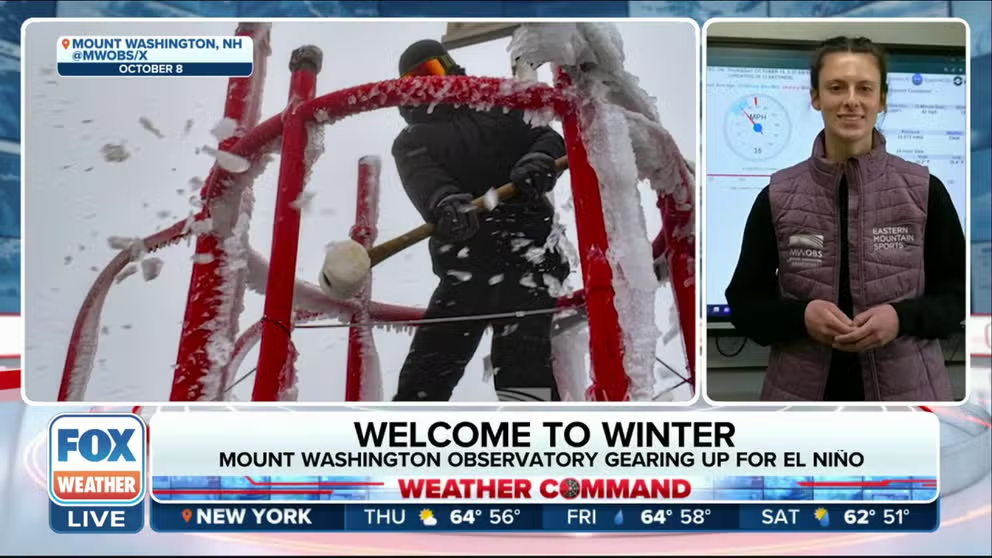A day in the life of people observing ‘world’s worst weather’ atop New Hampshire's Mount Washington
Rime ice covers everything on the summit and is one of the wintry weather hazards weather observers have to deal with during their week-long shifts. The observers have to climb the 100-foot tower to break the ice off the weather instruments.
Mount Washington Observatory collects data on 'world's worst weather''
Alexandra Branton, a Mount Washington Observatory weather observer, explains the unique winter weather phenomenon seen at the highest summit in the Northeast. Observers go out in all conditions from snow, ice and wind to check on their weather instruments.
MOUNT WASHINGTON, N.H. – Year round, someone is monitoring the weather from the nearly 6,300-foot summit at the Mount Washington Observatory, known for the "world's worst weather."
The nonprofit observatory in New Hampshire is a research station dedicated to weather and climate data. Located at the highest summit in the northeastern U.S., the extreme weather conditions offer plenty of weather data and challenges for the brave people who live and work there.
"It's snowy, it's icy. It's windy just like it usually is in the fall here on the highest summit in the Northeast," said Alexandra Branton, a Mount Washington Observatory weather observer, who spoke to FOX Weather as the winter conditions started this year in October.
SEE IT: MOUNT WASHINGTON GETS BLAST OF WINTER AHEAD OF UNOFFICIAL START OF SUMMER
Weather observers man the weather station 24 hours a day, 365 days a year, working week-long shifts. During the winter, observers use a Snowcat to take the Mount Washington Auto Road to reach the summit.

The first measurable snowfall of the season at the Mount Washington Observatory measured 4.5 inches. (Image: MWO)
On Oct. 8, the summit received its first measurable snowfall of the season with 0.3 inches of snow. The wintry weather continued into mid-October, with 4.5 inches of snowfall on Wednesday and a new thick coating of rime ice.

A weather observer knocks off rime ice at the Mount Washington Observatory in New Hampshire. (Image credit: MWO)
Rime ice covers everything on the summit and is one of the wintry weather hazards weather observers have to deal with during their shifts. Rime ice forms when liquid water droplets from fog form in below-freezing temperatures.
UNFATHOMABLE COLD FROM POLAR VORTEX: NEW HAMPSHIRE SETS COLDEST US WIND CHILL RECORD AT -108 DEGREES
"Mount Washington is in a fog for 60% of the year, meaning most of the time we're in a cloud," Branton said. "Any time those liquid water droplets make contact with anything, whether it be the building, the instruments, or even yourself walking around out there, it freezes on contact."

Rime ice at the Mount Washington Observatory in New Hampshire. (Image credit: MWO)
Weather observers go outside every hour in extreme temperatures and intense winds because the weather station is not automated like many others around the world due to icing and high winds.
"We go all in no matter the weather conditions," Branton said. "Whether the wind is blowing 100 miles per hour, whether it's heavy snow. The only time we don't go outside is if it's lightning."
Because rime ice encases everything, the instruments used at the MWO need help from the weather observers and a little brute force.
"We're climbing all the way to the top of the tower, which is about 100 feet above the rest of the deck underneath it. And we basically just hit the poles the instruments are mounted on with a rubber mallet or a crowbar, whichever instrument we're using that day," Branton said.
The MWO measures snow just about every month of the year, but last June was unique. The 8.4 inches of snow in June set a new record for the month, and that data goes back to 1932.
The total was "about seven inches more than we usually see for the entire summer and June," Branton said.
The observations from the MWO are used by the National Weather Service for forecasting models.
